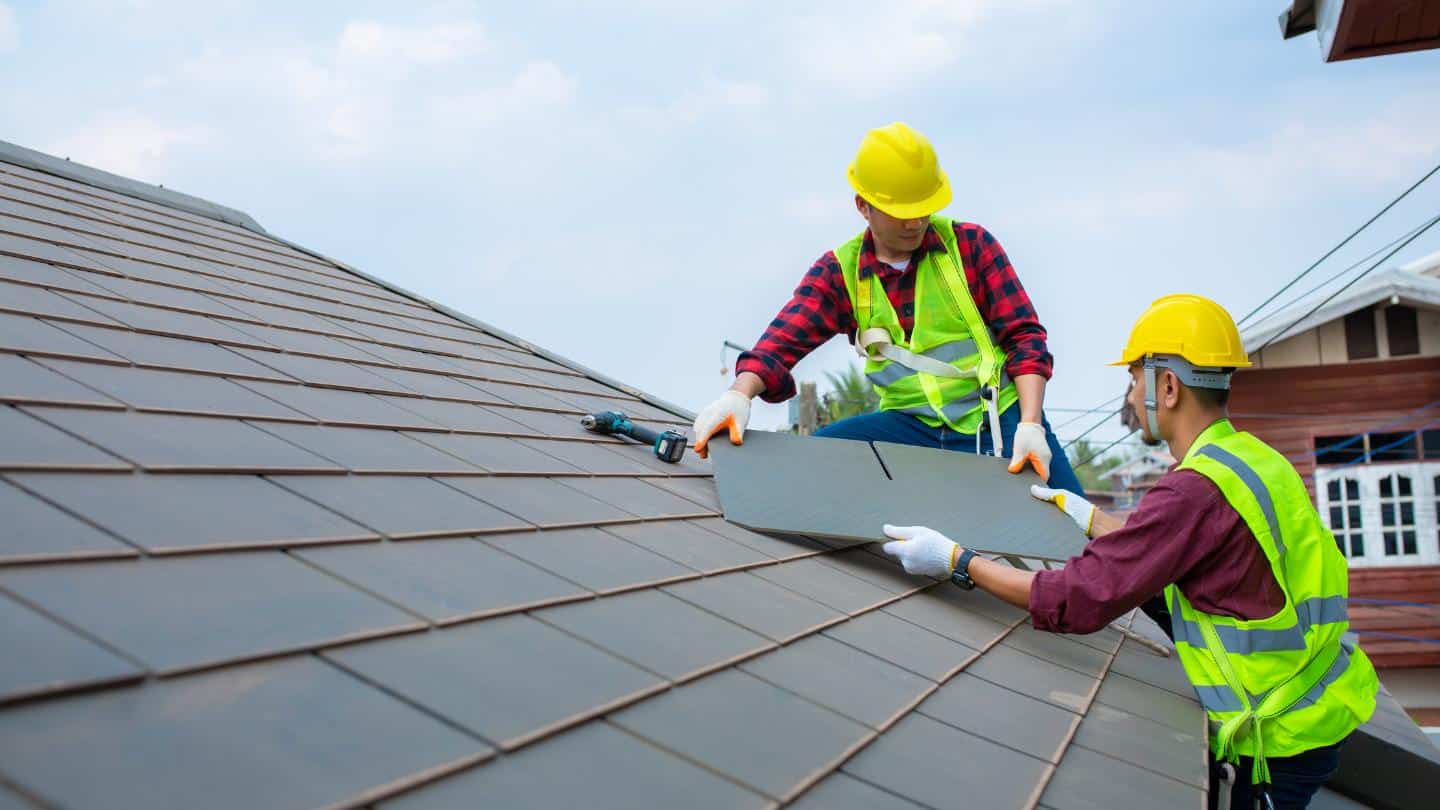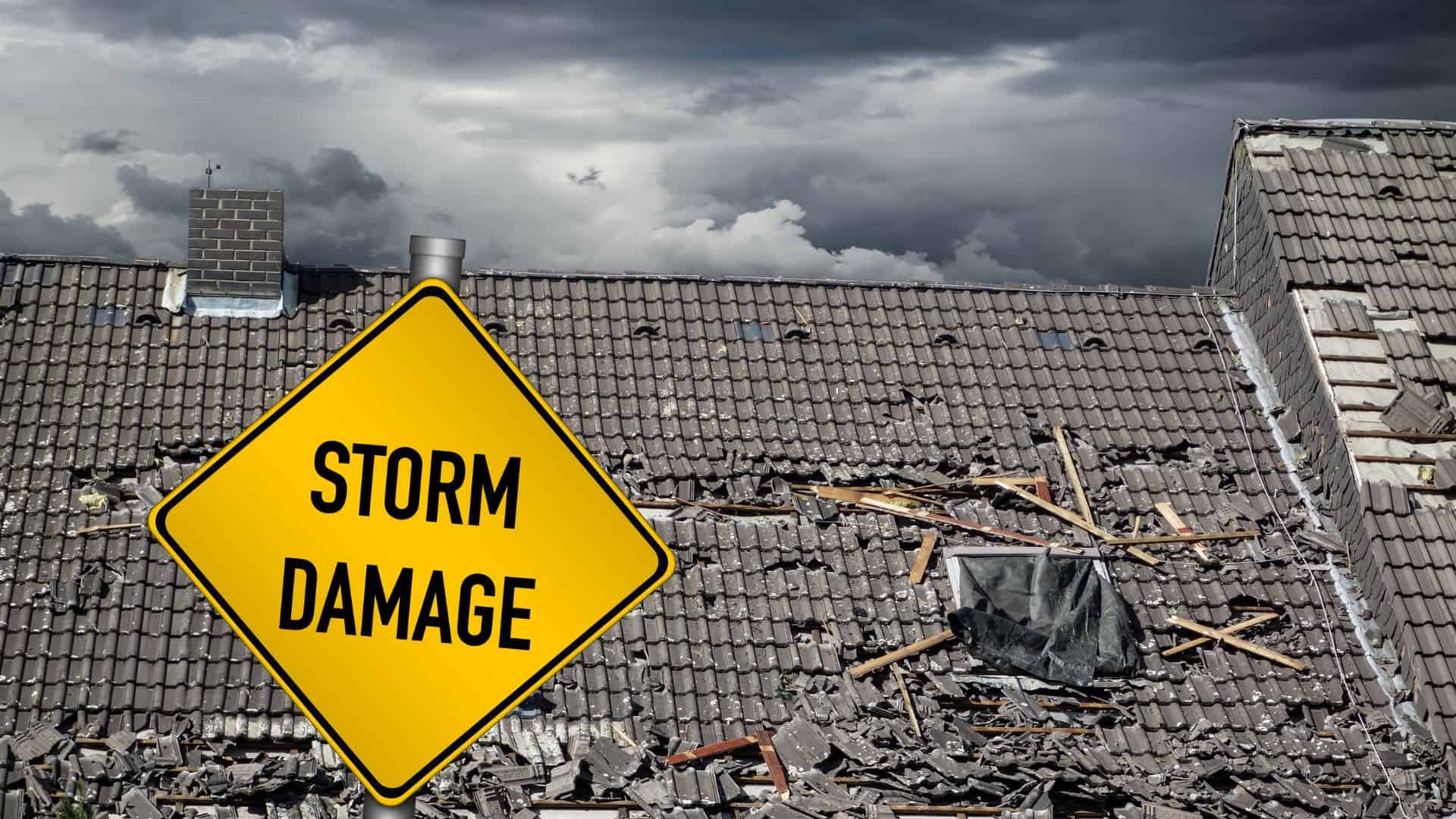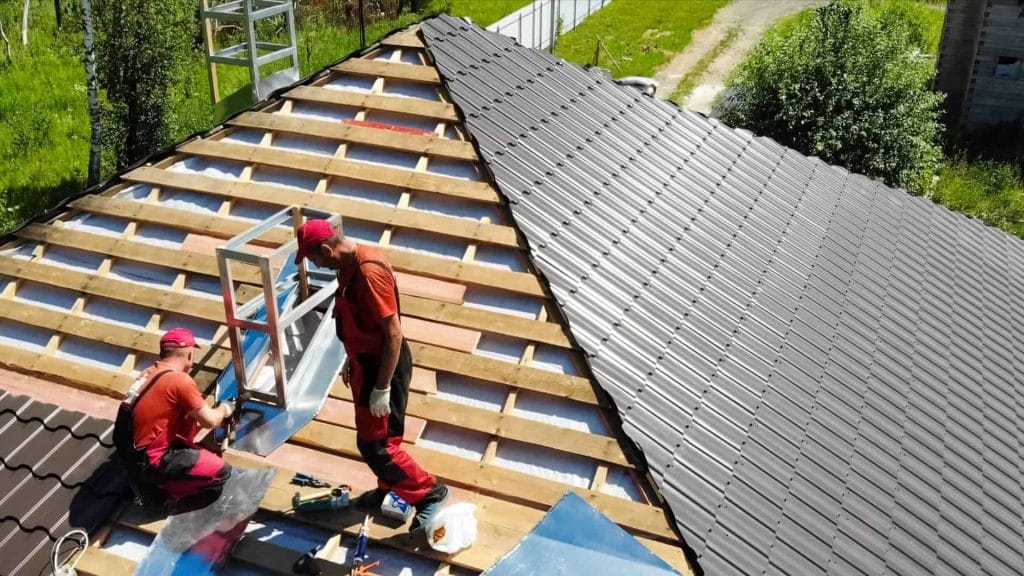Your home is likely one of the biggest investments you’ve made, and naturally, you’d want to protect it. But have you ever wondered about your roof? It’s easy to overlook the importance of maintaining or replacing it when necessary until problems start showing up. Your roof plays a crucial role in protecting everything that resides under it – from family members to cherished possessions. So, knowing how often to replace it is key.
With various factors at play such as materials used, the climate you live in, how well it was installed initially, and simply its age – deciphering when exactly a replacement is due can be quite complex. In this article, we’ll delve into these aspects and provide insights on indicators signaling a necessary replacement before any major damage occurs. We’ll also discuss why consulting with roofing professionals could be beneficial for your decision-making process. Let’s secure your home by understanding more about the life span of your roof!
The Importance of Regular Maintenance
Don’t underestimate the power of regular maintenance, folks, it’s a real game-changer in extending your roof’s lifespan and keeping those pesky leaks at bay! A consistent maintenance scheduling is crucial to ensure optimal performance. It involves scheduled check-ups and inspections that can help identify potential issues before they escalate into bigger problems. Regular cleaning to remove debris and leaves can prevent water accumulation which can cause damage over time.
Preventative repairs play an equally important role in maintaining your roof’s health. These are fixes done to avoid future problems rather than waiting for damages to occur then repairing them. This approach could save you from expensive repair costs down the road, as well as extend the lifespan of your roof significantly. So don’t skimp on these preventative measures; they’re worth every penny!
Understanding Different Roofing Materials and Their Durability

Before diving into specifics, it’s crucial to understand that the durability of different roofing materials can greatly vary. For instance, asphalt shingles, one of the most common roofing materials in America, typically last around 15 to 20 years. On the other hand, metal roofs are known for their longevity and can easily last up to 50 years or more with proper care. The material costs involved also play a significant role in your decision-making process. More durable materials like slate or tile tend to be pricier upfront but may offer greater value over time due to their extended lifespan.
In addition to considering durability and material costs, you should also think about recycling opportunities when choosing a new roof. Certain materials like metal and slate are highly recyclable and eco-friendly options if sustainability is high on your priority list. Materials such as asphalt shingles aren’t as easy to recycle but there are programs available that turn worn-out shingles into road paving material. Weighing these factors will help ensure that you choose a roof that not only suits your budget but also aligns with your values regarding environmental responsibility.
Climate Impact on Roof Longevity
It’s vital to note that the climate where you live can have a significant impact on how long your chosen roofing material lasts. Extreme weather effects are particularly influential in this regard. If you’re living in an area prone to hurricanes, heavy snowfall, hailstorms, or high winds, these conditions can cause severe damage and shorten the lifespan of your roof. Even less dramatic weather changes, like frequent rain or excessive heat, can wear down roofing materials over time.
Seasonal changes also play a key role in determining your roof’s longevity. For instance, if your home experiences wide temperature swings between winter and summer seasons, it could lead to a cycle of expansion and contraction for your roofing materials. This constant change can stress out the material causing cracks or other forms of damage over time. Therefore, understanding these climate factors is crucial when considering when to replace your roof – it will help ensure that you make the most cost-effective decisions for maintaining a sturdy shelter above your head.
The Role of Proper Installation
Let’s not overlook the critical role of proper installation in preserving the durability and longevity of your home’s topmost defense. Installation mistakes can dramatically shorten your roof’s life expectancy, leading to leaks, damage, and eventually a complete replacement long before its due time. Skilled workmanship is essential – it ensures that every shingle is nailed down correctly, flashing is installed where needed, and ventilation systems are properly set up. A well-installed roof will stand firm against harsh weather conditions and wear-and-tear over many years.
Remember that cutting corners during installation will likely lead to increased costs down the line. For instance, if roof underlayment isn’t applied correctly or quality materials aren’t used, you might find yourself facing premature repairs or even a full replacement. Trusting skilled workmanship for your roof installation means investing in the prolonged health of your home. It’s an investment that pays off by providing peace of mind knowing that your family and belongings are protected reliably for years to come.
Age of the Current Structure
Are the years creeping up on your current roofing structure? It’s crucial to understand that the age of your house can significantly influence the lifespan of your roof. If you’re living in an older home, especially one that has historical preservation requirements, you might encounter more challenges when it comes to maintaining structural stability. You see, these old structures were built with different materials and methods than what we use today. As a result, they may require special care or frequent replacements to ensure safety and longevity.
Don’t let this deter you though; there are ways around it. Regular inspections can help assess the condition of your roof and identify potential issues before they become severe problems. When dealing with older homes or those under historical preservation, this becomes even more essential as certain architectural elements must be preserved without compromising on structural stability. The key is finding a balance between maintaining the historic integrity of the building while ensuring that your roof is durable and capable of protecting you from external elements. Remember: A well-maintained roof translates into a safer home for you and your loved ones.
Indicators of Necessary Replacement

Knowing when it’s time for a new roof isn’t always obvious, so we’ll delve into some key indicators that signal the need for replacement. Damage identification is crucial in knowing when to replace your roof. You might be dealing with cracked or missing shingles, leaks inside your house, or dark streaks and patches on your roof – these are all signs of potential damage. Moreover, if you see light coming through the attic or detect sagging spots on the roof surface, don’t ignore it! These are severe issues that could lead to expensive repairs if not addressed promptly.
Consideration of replacement costs is another factor when deciding whether to repair or replace a roof. If your current roof is often needing repairs, you may find that over time the cost of these fixes will exceed what a new installation would have been. Besides, keep an eye on energy bills too – a problematic roof can cause inefficiency in home insulation leading to a hike in heating and cooling expenses. So remember: regular inspection and immediate action at the first sign of trouble can save you from hefty future expenses while ensuring the longevity of your beloved abode.
Consultation with Roofing Professionals
Having looked at the signs that may indicate your roof needs replacement, it’s essential to understand that you don’t have to make this decision alone. The complexities involved in assessing your roof’s health can be daunting and making a wrong judgement could cost you significantly in terms of money, time, and safety. That’s where professional advice comes into play.
Reaching out to roofing professionals is a smart move. They’re trained and experienced in identifying tell-tale signs of wear and tear that might not be evident to an untrained eye. Aside from providing invaluable advice on whether a replacement is necessary or if repairs would suffice, they also offer cost estimation services. This gives you an idea of the financial commitment involved, helping you plan effectively for the project while avoiding unexpected expenses down the line. Consulting with experts ensures that whatever decision you make regarding your roof is informed, practical, and beneficial in the long run.
Conclusion
In conclusion, your roof’s lifespan depends on several factors. Regular maintenance, the type of material used, climate impact, proper installation and the age of your structure all play pivotal roles. So, don’t overlook these aspects.
Moreover, keep an eye out for any telltale signs that you need a roof replacement. And when in doubt? Don’t hesitate to consult with a roofing professional. They’re there to help ensure you’ve got a solid roof over your head!














